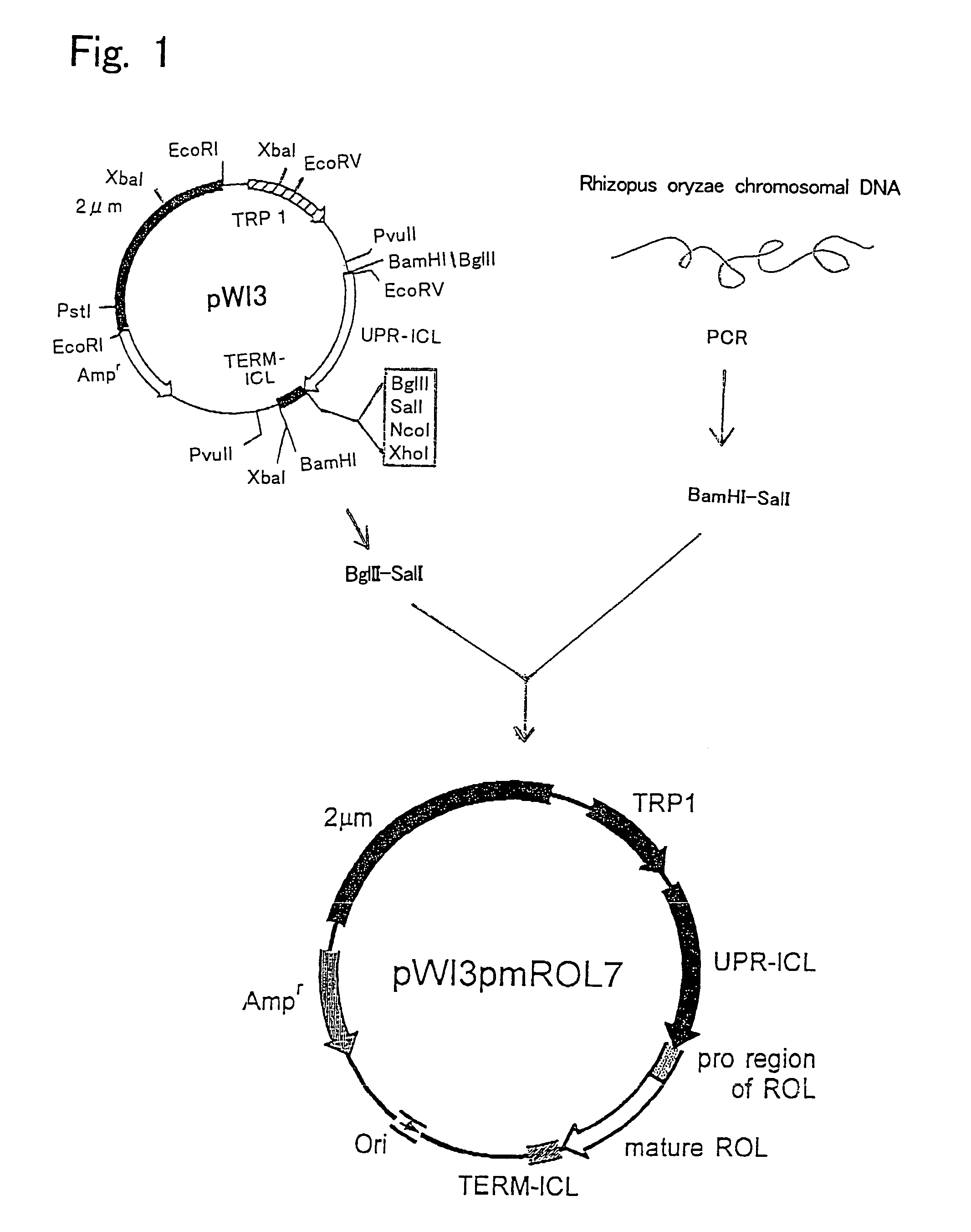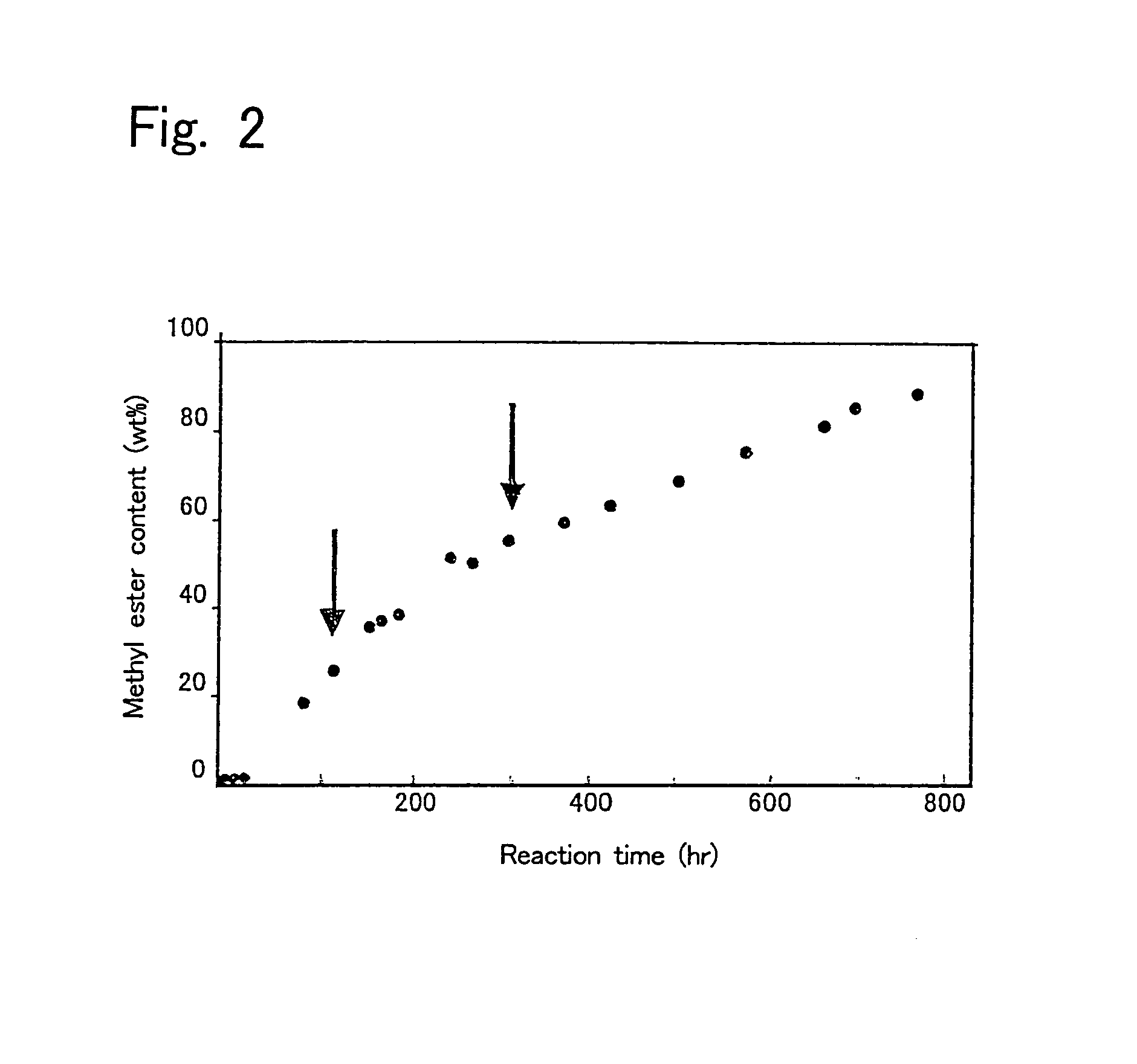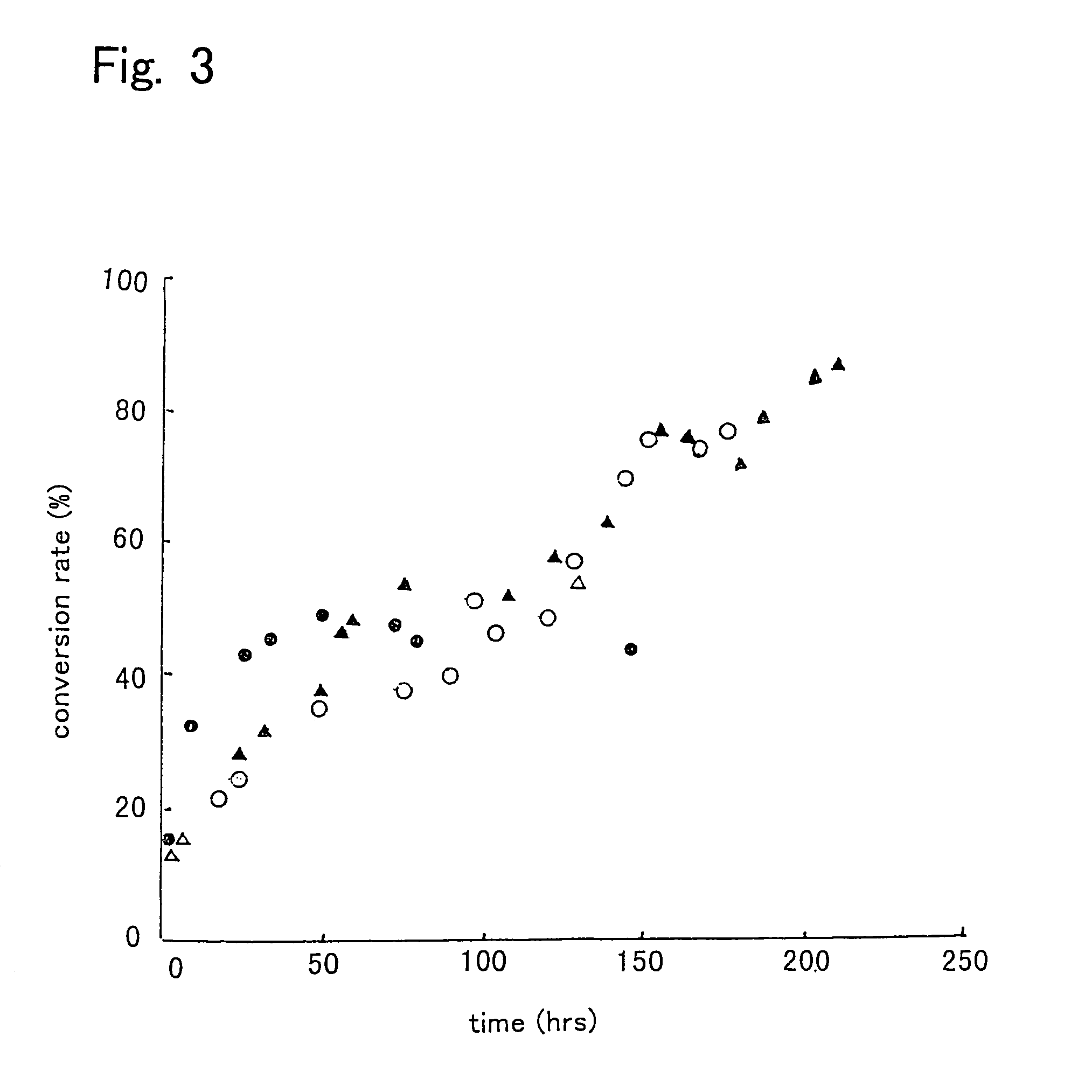Process for producing fatty acid lower alcohol ester
a technology of fatty acid and alcohol ester, which is applied in the preparation of carboxylic compounds, fatty acid chemical modifications, biofuels, etc., can solve the problems of reduced exhaust amount, environmental problems, and complex process
- Summary
- Abstract
- Description
- Claims
- Application Information
AI Technical Summary
Benefits of technology
Problems solved by technology
Method used
Image
Examples
example 1
[0067]First, 1 g of water was added to each of 10 g of a mixture of 9.65 g of soybean oil and 0.35 g of methanol (molar ratio of 1:1) and 10 g of a mixture of 9.32 g of soybean oil and 0.68 g of methanol (molar ratio of 1:2) to prepare reaction mixtures. Then, 50 pieces of intact immobilized microorganisms or 50 pieces of solvent-treated immobilized microorganisms were added to these reaction mixtures, and allowed to react for 20 hours at 30° C. with shaking at 130 rpm. After the reaction, the produced fatty acid ester was quantified by gas chromatography (GC). GC was performed using tricaprylin as the internal standard, under the following conditions.
[0068]GC conditions:[0069]Column: DB-5 (J&W Scientific, 10 m×25 mm)[0070]Initial column temperature: 150° C. (0.5 min)[0071]Temperature increase rate: 10° C. / min[0072]Final temperature: 300° C. (three minutes)[0073]Injector temperature: 245° C.[0074]Detector temperature: 320° C.[0075]Carrier gas: helium (2.5 cm / min)[0076]Split ratio: 1...
example 2
[0080]First, 10 g of a mixture of 9.65 g of soybean oil and 0.35 g of methanol (molar ratio of 1:1) was prepared, and water in the amount shown in Table 2 was added thereto to prepare reaction mixtures. Then, each 50 pieces of intact immobilized microorganisms, acetone-treated immobilized microorganisms, or isopropyl alcohol-treated immobilized microorganisms were added to the reaction mixtures, and allowed to react for one day at 30° C. with shaking at 130 oscillations per min. Then, 0.31 g of methanol was added to the reaction mixtures, and allowed to react for further 24 hours (Day 2). Again 0.31 g of methanol was added thereto and allowed to react for one day (Day 3). Thereafter, a reaction was further performed for 3 days (thus a total of 6 days). The results are shown in Table 2. The conversion ratio in Table 2 is represented by the methyl esterification ratio of the fatty acid contained in the soybean oil.
[0081]
TABLE 2ImmobilizedWatermicroorganism(g)Day 1Day 2Day 3Day 6intact...
example 3
[0083]A microorganism that can express a recombinant lipase that does not have a functional sequence involved in secretion was prepared.
[0084]Plasmid pWI3 was used as the starting vector for producing a plasmid containing a DNA sequence encoding a recombinant lipase that does not have a functional sequence involved in secretion. A method for producing plasmid pWI3 is described in Kanai T. et al., Appl. Microbiol. Biotechnol. 1996, 44 (6), 759–765. The restriction enzyme map of plasmid pWI3 is shown in FIG. 1.
[0085]First, a chromosome of R. oryzae IFO 4697 was prepared by a conventional method. A lipase (ROL) gene derived from R. oryzae was obtained by amplification from this chromosomal DNA by PCR method using pfuTurbo polymerase (manufactured by Stratagene; #600250). In PCR, Ics (5′-ctccggatccatggttcctgtttctggtaaatctggatct-3′: Sequence ID No: 2) and ROLrvSalI (5′-cgatgtcgacttacaaacagcttcc-3′: Sequence ID No: 3) were used as primers. A ROL gene amplified using these two synthesized ...
PUM
 Login to View More
Login to View More Abstract
Description
Claims
Application Information
 Login to View More
Login to View More - R&D
- Intellectual Property
- Life Sciences
- Materials
- Tech Scout
- Unparalleled Data Quality
- Higher Quality Content
- 60% Fewer Hallucinations
Browse by: Latest US Patents, China's latest patents, Technical Efficacy Thesaurus, Application Domain, Technology Topic, Popular Technical Reports.
© 2025 PatSnap. All rights reserved.Legal|Privacy policy|Modern Slavery Act Transparency Statement|Sitemap|About US| Contact US: help@patsnap.com



